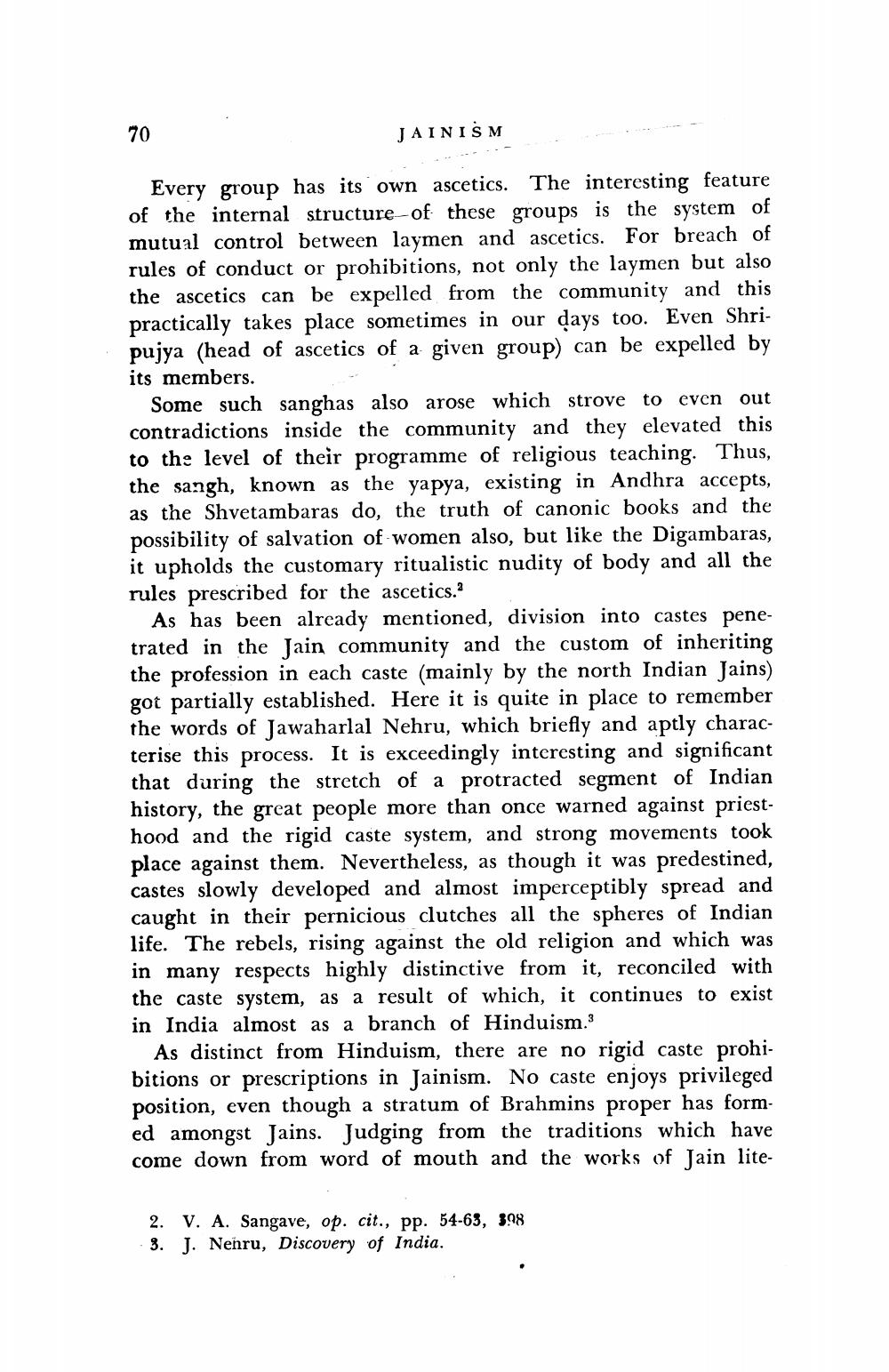________________
70
JAINISM
Every group has its own ascetics. The interesting feature of the internal structure-of these groups is the system of mutual control between laymen and ascetics. For breach of rules of conduct or prohibitions, not only the laymen but also the ascetics can be expelled from the community and this practically takes place sometimes in our days too. Even Shripujya (head of ascetics of a given group) can be expelled by its members.
Some such sanghas also arose which strove to even out contradictions inside the community and they elevated this to the level of their programme of religious teaching. Thus, the sangh, known as the yapya, existing in Andhra accepts, as the Shvetambaras do, the truth of canonic books and the possibility of salvation of women also, but like the Digambaras, it upholds the customary ritualistic nudity of body and all the rules prescribed for the ascetics.”
As has been already mentioned, division into castes penetrated in the Jain community and the custom of inheriting the profession in each caste (mainly by the north Indian Jains) got partially established. Here it is quite in place to remember the words of Jawaharlal Nehru, which briefly and aptly characterise this process. It is exceedingly interesting and significant that during the stretch of a protracted segment of Indian history, the great people more than once warned against priesthood and the rigid caste system, and strong movements took place against them. Nevertheless, as though it was predestined, castes slowly developed and almost imperceptibly spread and caught in their pernicious clutches all the spheres of Indian life. The rebels, rising against the old religion and which was in many respects highly distinctive from it, reconciled with the caste system, as a result of which, it continues to exist in India almost as a branch of Hinduism.
As distinct from Hinduism, there are no rigid caste prohibitions or prescriptions in Jainism. No caste enjoys privileged position, even though a stratum of Brahmins proper has formed amongst Jains. Judging from the traditions which have come down from word of mouth and the works of Jain lite
2. V. A. Sangave, op. cit., pp. 54-63, 398 3. J. Nenru, Discovery of India.




